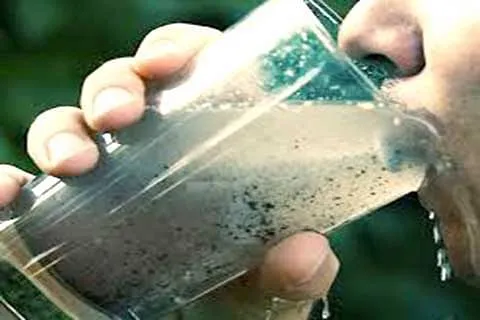Around 74 percent of the drinking water samples picked from various sources across Kashmir have been found contaminated with “microbes”, official data has revealed.
In Kashmir, as part of its drinking water surveillance, 473 samples were lifted for testing from January to July this year. Shockingly, out of total samples, 349 (73.8 percent) were found to be contaminated during investigation carried out to establish safety for drinking purposes.
This information is part of the data accessed by Greater Kashmir from Integrated Disease Surveillance Program (IDSP) of union ministry of Health and Family Welfare (MoHFW).
The contaminations, as per the data include bacteria and other organisms that cause diseases such as gastroenteritis, typhoid and acute diarrheal diseases.
The data further reveals that Anantnag gets the “most contaminated water supply” where 97 out of 101 samples have tested positive for contaminations.
In Baramulla too, a similar scenario has been found where 28 out of 30 drinking water samples were found contaminated.
In Srinagar, the quality of drinking water “seems better” and out of 39 samples tested, only 08 were found contaminated.
Sampling has been minimal in districts like Ganderbal and Bandipora where less than 10 water sources have been tested for contamination. However, even in this small sample size, significant contaminations were found. Out of six samples tested in Bandipora, five were found to be contaminated.
Unsafe drinking water has been linked to a number of health conditions and a major contributor to childhood illnesses.
As per the comprehensive report on state of diseases afflicting the world, published in prestigious Lancet in September 2017, infectious diseases, especially water-borne diseases and those resulting from poor hygiene are still a major cause of illness in J&K, along with other states in India. It is also stated to be a significant factor for child mortality.
The latest survey has put a question mark over quality of water people in Kashmir have access to. A source in Public Health Engineering (PHE) department said the department had limited its role to “just routing water” from source to homes.
He said that due to old and dilapidated pipelines, contaminations easily found their way into water. “The metallic water pipes, rusted and with very weak and permeable joints pass through drains and sewers. At any point, the sewerage and all other contaminants find their way into these pipelines,” he said. He added that water was not even treated at most places and people were supplied water full of dangerous microbes.
Chief Engineer PHE (Kashmir Division), Abdul Wahid said that most water supply schemes in J&K were “decades old” and that was the cause for poor infrastructure
“In old schemes, there was no provision to ensure quality of water. That time, the focus was on just improving access to water,” he said.
He added that with new schemes, such as national rural drinking water program, there would be “an overhaul” of water supply. “In next two to three years, we will cover entire state under these new schemes and ensure safe drinking water,” he said.






